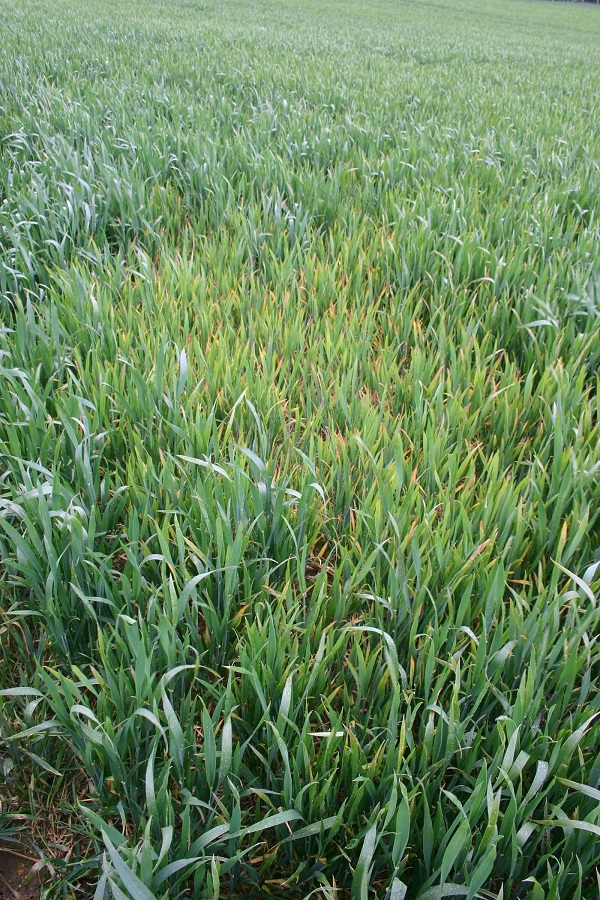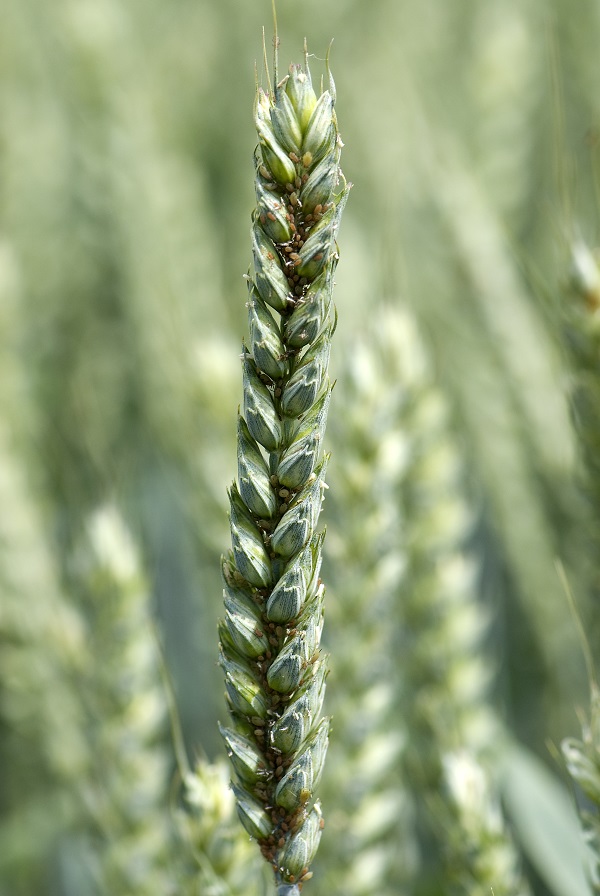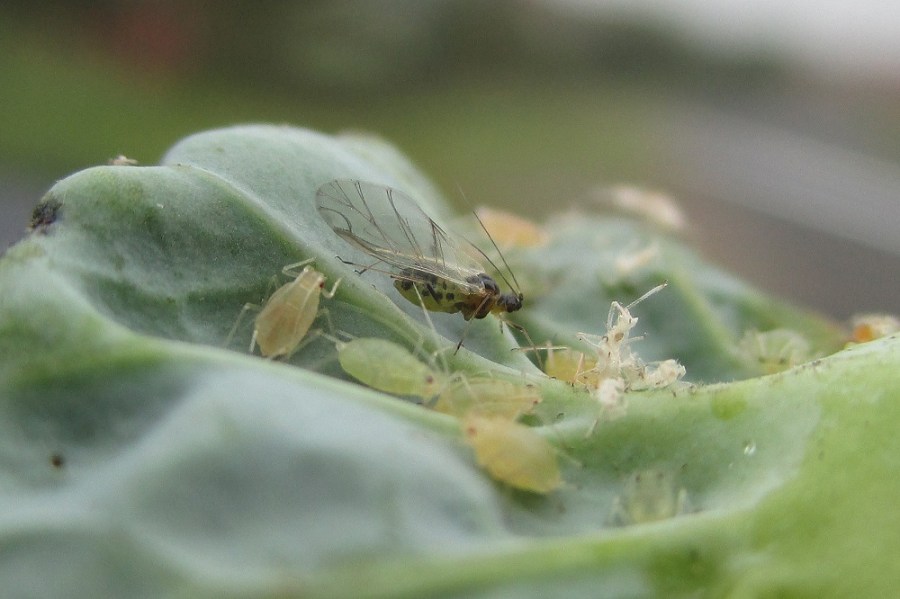New research raises questions whether insecticide resistance management guidelines should be revised. CPM finds out about current resistance threats and how these may be better managed in the future.
We’re still not sure what the main resistance mechanism is in CSFB in the UK, but we suspect that it’s metabolic.
By Lucy de la Pasture
Insects are enormously adaptable which has contributed to their success, to the extent they represent more than half of the world’s biodiversity. For growers, this has meant a perennial battle to protect crops with an ever-reducing armoury of insecticide products. The trouble is many insect pests have an uncanny knack of rendering the chemist’s insecticide innovation useless.

Many aphids are important vectors of viruses, such as BYDV, which can cause high levels of economic damage in crops.
But all is not lost. Researchers have been piecing together the best possible way to prolong the life of existing chemistry and delay the onset of resistance to new molecules that will come through the innovation pipeline, explains AHDB’s crop protection senior scientist, Dr Sue Cowgill.
“It’s important to recognise the potential impact of insecticide resistance on our ability to produce crops. We don’t have many new active ingredients coming to market and we’re losing actives due to tightening legislation. That means we can’t afford to compromise the effectiveness of the ones that remain,” she says.
The research has a multi-pronged approach, with one project covering monitoring and resistance testing, and another looking at how to combat resistance in the major UK pests. The first is a cross-industry-funded initiative and led by research entomologist and chair of the Insecticide Resistance Action Group (IRAG), Dr Steve Foster at Rothamsted Research.
He’s monitoring UK pest samples for evidence of reduced sensitivity and stronger resistance to a range of insecticides, particularly where there’s been control failures. His results indicate the scale of the problem in a broad range of species.
Steve had a busy season in 2017, with the number of live samples collected and range of pest species screened the highest since the insecticide screening work began.

Grain aphid, one of the principle vectors of BYDV, are resistant to pyrethroids.
One of the most important pests in the UK is the peach-potato aphid (Myzus persicae), primarily due to its role as a virus vector in a broad range of crops. Steve has developed screening assays for pyrethroids, the diamides and the neonicotinoids, as well as the more novel modes of action found in flonicamid (Teppeki), spirotetramat (Movento), pymetrozine (Plenum) and the development insecticide, sulfoxaflor (Isoclast).
“In 2017, the resistance picture for M. persicae stayed the same, with samples carrying resistance to the pyrethroids and pirimicarb.” he says. “DNA testing showed that levels of the target site resistance, MACE (Modified AcetylCholinEsterase) are still high but these may fall through a reduction in selection pressure since pirimicarb’s recent withdrawal.
“It’s of interest as the target site mutation that confers super-kdr (knockdown resistance) to pyrethroids occurs on the same aphids that carry the MACE mutation, making up around 85% of the M. persicae population,” he explains.
The Rothamsted team have also been keeping a close eye on M. persicae for any sign of the strong neonicotinoid resistance (Nic-SR/RR) that’s become widespread in southern Europe and North Africa but hasn’t yet made its way to the UK.
“For the grain aphid (Sitobion avenae), all three samples tested in 2017 were from Yorks and proved positive for kdr-resistance at a similar level to previous years, so there’s been no step in their evolution,” reports Steve.
The other important virus-transmitting aphids in cereals, the rose-grain aphid (Metopolophium dirhodum) and the bird-cherry oat aphid (Rhopalosiphum padi), weren’t reported to be showing any resistance to pyrethroids.
Cabbage stem flea beetle (CSFB) (Psylliodes chrysocephala) have had their fair share of exposure to pyrethroids since the loss of neonicotinoid seed treatments in the oilseed rape crop. So it’s no surprise that in his 2017 tests, Steve found pyrethroid resistance at a similar or slightly worse level than in previous years, particularly in Suffolk.
“We’re still not sure what the main resistance mechanism is in CSFB in the UK, but we suspect that it’s metabolic. That means the pest over-produces an enzyme which reduces the effectiveness of the insecticide, but we don’t know which enzyme it is yet,” he explains.
Steve warns that another OSR pest, pollen beetle (Meligethes aeneus), has also retained its resistance to pyrethroid chemistry, according to his most recent test results. This indicates the problem hasn’t gone away, even though spraying for the pest has reduced considerably for several consecutive years due to beetle numbers being below spray thresholds.
As part of an extension to the project, Steve was able to test further species, finding pyrethroid resistance in diamond-back moth (Plutella xylostella), pea and bean weevil (Sitona lineatus), bean seed beetle (Bruchus rufimanus), striped flea beetle (Phyllotreta striolata) and seed weevil (Ceutorhynchus assimilis), demonstrating the problem is becoming more widespread.
Developing resistance management strategies to counter and limit the spread of resistance to insecticides is something ADAS entomologist Dr Sacha White has been working on in a separate project. He’s been attempting to unravel the complex interactions that influence whether resistance will occur and investigating the best management tactics.
Sacha explains that there are striking differences between the current anti-resistance guidance for insecticides and fungicides. For insecticides, full doses and alternation of modes of action (MoA) are recommended for resistance management whereas for fungicides, reduced doses and mixtures of MoA are widely recommended.
“Insects tend to reproduce sexually and be diploid (have two copies of each chromosome), whereas diseases are generally clonal or haploid (one copy of each chromosome). For insects, this results in a recombination of genes that can produce heterozygous individuals (one resistant and one susceptible gene) with intermediate degrees of resistance. For example, in Myzus persicae, knockdown resistance confers approximately 40-fold resistance in the heterozygous form and over 100-fold resistance in the homozygous form,” he explains.
In contrast, for diseases heterozygous individuals with intermediate levels of resistance are rare. These differences may account for the different approaches to resistance management between fungicides and insecticides, he suggests.
As part of Sacha’s project, Rothamsted’s Joe Helps set out to test the effect of different management strategies and insecticide rates using mathematical models to estimate the build-up of resistant strains with target site resistance (e.g. super-kdr in M. persicae).
“The results showed that if a single mode of action was used, lower doses of insecticide led to a slower build-up of resistance, and so in most scenarios this was a better strategy than using a high dose,” explains Sacha.
The main exception was where very high numbers of susceptible individuals were emigrating into the UK population.
“Where two modes of action were modelled, it was found that where they were used at full label rate, it was better to alternate them rather than use in a mixture. We then looked at using balanced dose mixtures, where each insecticide component is used at a reduced dose, but the mixture provides the same control as a full-label rate of either component.
This approach resulted in a slower rate of resistance build up than alternation, except where a high fitness penalty was associated with the resistance. “Balanced dose mixtures are also more likely to be acceptable to regulators than full dose mixtures,” he adds.
The mathematical modelling has turned the current approach to insecticide resistance management on its head, but the theory needs to be tested by experimentally validating the models before changes to IRAG guidance are issued, highlights Sacha.
“A move to balanced doses and using mixtures is in line with FRAG guidelines, so it would be easier for the industry if resistance management guidelines were the same for pests, diseases and weeds,” he adds.
One of the things that could prolong the life of actives is a better understanding of the likelihood of resistance developing in the first place and using this knowledge to improve the way a product is used.
“A risk assessment is used to guide any label restrictions put in place when a product is registered and when the authorisation comes up for renewal. It’s a process which needs to be accurate because if the risk of resistance occurring is over-estimated, then the constraints on the label will be too great but if it’s underestimated, the product will succumb more quickly to resistance than anticipated,” he explains.
Currently the risk assessments for resistance are less formalised for insecticides than for fungicides, and historical information on resistance plays a central role. This approach presents problems when a new MoA is introduced or a pest with no known resistance history develops resistance.
The challenge of the second part to Sacha’s project was to develop a novel, trait-based risk assessment scheme. He collated a historical database of resistance cases and calculated the time it took for resistance to occur in each and then associated traits with each case. Using this information, the relationship of the traits to risk were analysed and a model produced to give a risk assessment for resistance.
More than one answer to resistance problem
Agronomists are at the sharp end when it comes to managing insecticide resistance in the field. For Agrii’s Chris Wallwork, who specialises in horticultural crops, any damage caused by insects can be the difference between a crop that’s marketable or one that’s a complete write-off. The stakes are high.
In arable crops, insecticide failures may not necessarily mean total crop loss, but can present problems with establishment, growth, quality and the spread of many viruses. It all ultimately adds up to yield loss.
Chris views the research with interest, particularly where resistance management strategies have been modelled. Standing in the frontline, he believes there’s still an element of crystal ball gazing required.
“The difficulty is that in the early stages of a new resistance developing, you don’t know the mechanism. If we knew it was going to be target site, then the best way to encourage resistance to develop would be to apply a repeated high selection pressure.”
“But if what we get is an enhanced metabolic mechanism, then the best way to encourage this would be to apply a reduced dose of insecticide. This happened with esterase resistance in M. persicae – if a reduced rate was applied to an R1, then it selected for R2s and R3s,“ he says.
That’s not to dismiss the value of the work which Chris stresses as being both important and helpful, as he found when Steve Foster identified spinosad (Tracer) resistance in onion thrips (Thrips tabaci) that were causing problems in a crop of salad onions last year.
With few new actives coming onto the market, having anti-resistance management strategies that will help prolong their life is what the industry needs. And having best tactics at the ready for the arrival of resistances from the continent, such as the neonicotinoid resistance that is just over the water in Europe, is crucial, believes Chris.
Agrii’s Will Foss points out that there are many cultural things arable growers can do as part of an integrated approach to insecticide resistance management. “For example, there’s been an increased interest in companion cropping in OSR to reduce CSFB damage, and anecdotally it appears to be working. Growers are reporting reduced feeding, fewer larvae and egg numbers due to the shielding effect of the companion crop,” he says.
Research roundup
AHDB Project No 201237680 ‘Combating insecticide resistance in major UK pests’, ran from Jan 2013 to July 2016 at a cost of £74,993 (total cost £550,003).
AHDB Project No 21510015, ‘Monitoring and managing insecticide resistance in UK pests’, is an annual industry investment. Led by Rothamsted Research, the current project runs from April 2018 to March 2019 at a cost to AHDB of £42,000 (total cost is £126,000).
Latest IRAG information is available at https://cereals.ahdb.org.uk/IRAG




